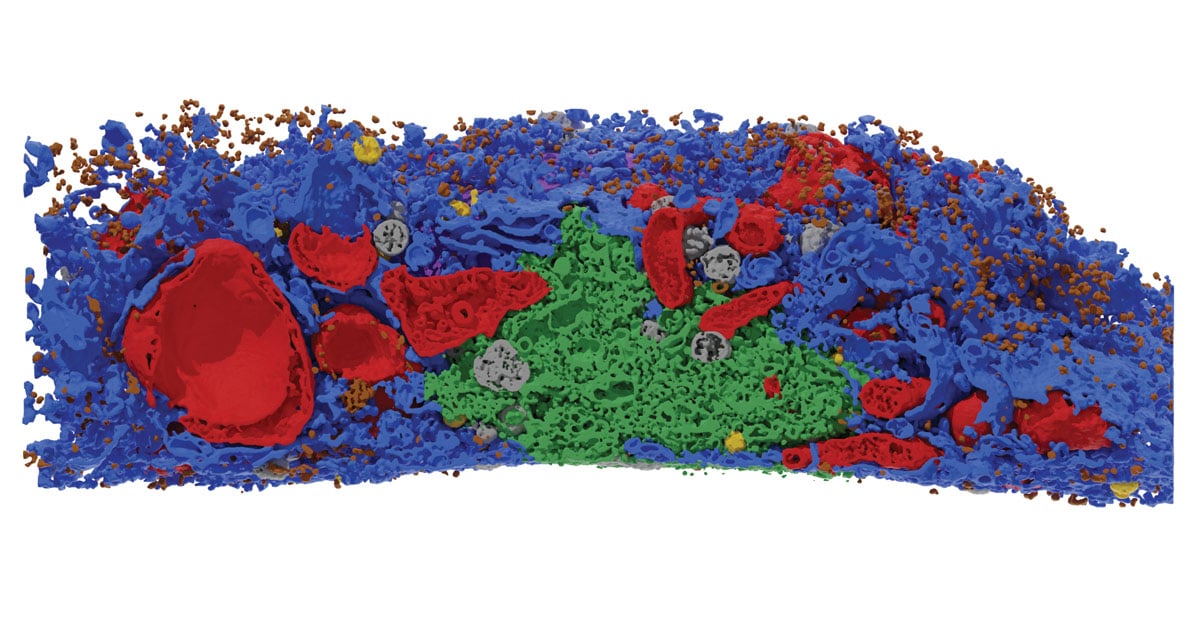Search

Research
Precision HealthListed are The Kids Research Institute Australia research teams involved in our Genetics and Rare Diseases Program. This program sits under the Chronic and Severe Diseases research theme.
Research
ANGEL2 phosphatase activity is required for non-canonical mitochondrial RNA processingCanonical RNA processing in mammalian mitochondria is defined by tRNAs acting as recognition sites for nucleases to release flanking transcripts. The relevant factors, their structures, and mechanism are well described, but not all mitochondrial transcripts are punctuated by tRNAs, and their mode of processing has remained unsolved.
Research
Quantitative subcellular reconstruction reveals a lipid mediated inter-organelle biogenesis networkThe structures and functions of organelles in cells depend on each other but have not been systematically explored. We established stable knockout cell lines of peroxisomal, Golgi and endoplasmic reticulum genes identified in a whole-genome CRISPR knockout screen for inducers of mitochondrial biogenesis stress, showing that defects in peroxisome, Golgi and endoplasmic reticulum metabolism disrupt mitochondrial structure and function.
Research
Mitochondrial Gene TherapyAleksandra Filipovska BSc PhD Louis Landau Chair in Child Health Research; NHMRC Leadership Fellow; Deputy Director, ARC Centre of Excellence for
Research
Control of mitophagy initiation and progression by the TBK1 adaptors NAP1 and SINTBADMitophagy preserves overall mitochondrial fitness by selectively targeting damaged mitochondria for degradation. The regulatory mechanisms that prevent PTEN-induced putative kinase 1 (PINK1) and E3 ubiquitin ligase Parkin (PINK1/Parkin)-dependent mitophagy and other selective autophagy pathways from overreacting while ensuring swift progression once initiated are largely elusive.

News & Events
Ideas Grants to support innovative researchTwo research teams, led by The Kids Research Institute Australia, have been awarded more than $2 million to fund innovative projects.
Research
In silico evolution of nucleic acid-binding proteins from a nonfunctional scaffoldDirected evolution emulates the process of natural selection to produce proteins with improved or altered functions. These approaches have proven to be very powerful but are technically challenging and particularly time and resource intensive. To bypass these limitations, we constructed a system to perform the entire process of directed evolution in silico.
Research
Pathogenic variants in RNPC3 are associated with hypopituitarism and primary ovarian insufficiencyWe aimed to investigate the molecular basis underlying a novel phenotype including hypopituitarism associated with primary ovarian insufficiency.
Research
Mitochondrial gene expression is required for platelet function and blood clottingPlatelets are anucleate blood cells that contain mitochondria and regulate blood clotting in response to injury. Mitochondria contain their own gene expression machinery that relies on nuclear-encoded factors for the biogenesis of the oxidative phosphorylation system to produce energy required for thrombosis.

News & Events
Researchers uncover the hidden wonder of cellsResearchers from The Kids Research Institute Australia and The University of Western Australia have developed a new technique to see inside cells with unprecedented detail, revealing a complicated web of interactions that provides new insights into how cells stay healthy.
